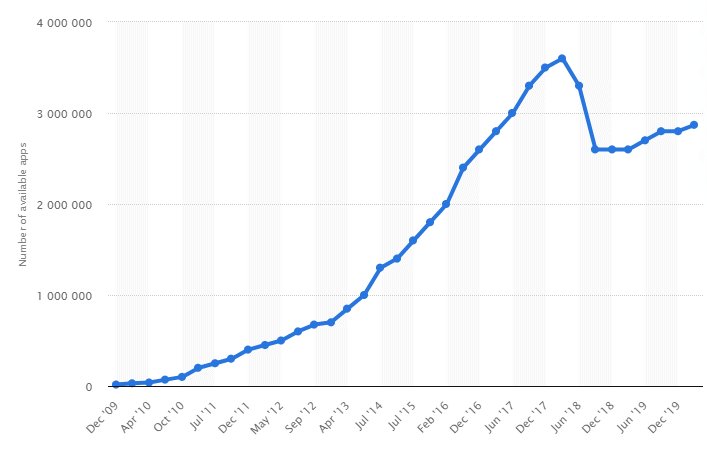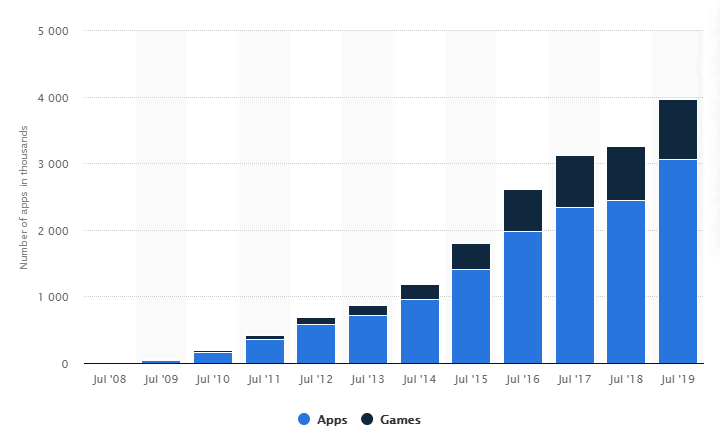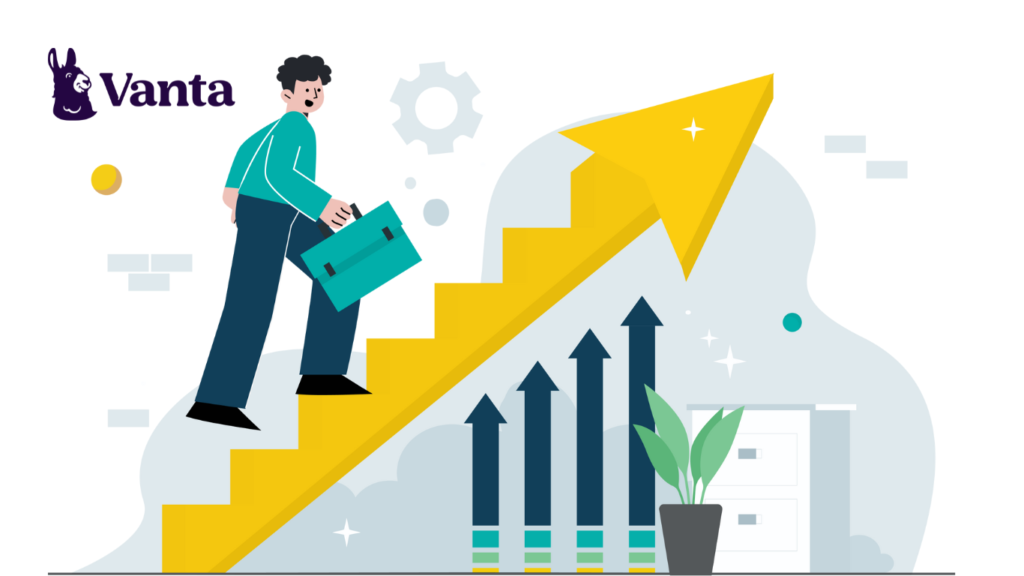Online Consumer Behavior Changes in Digital Age
It is quite an obvious statement to say that the internet and smartphones are the main sources of influence on the consumer behavior changes these days. How so? Well, before the advent of the Internet and, eventually, smartphones, transactions, and pretty much everything must be done “offline”. “Offline” activities aren’t always bad, however, it’s just that there are so many things that could’ve been maximized online. Multi-tasking is one of the things that could be, and very much was, very hard to do before the days of Internet and Smartphones.
One example would be shopping. Before the Internet and Smartphones, you will need to do everything conventionally. What do I mean by that? Well, let’s take a look into how typical conventional Indonesian grocery shopping looked before the Internet and Smartphones. You go to your preferred store, sweeten the deal with whoever’s in charge with the selling at the time in that store, and then you get back home either satisfied because you were successful in talking the good deal through with the seller, or disappointed because, well, talking a good deal out isn’t quite a walk in the park.

Then there comes Internet and Smartphones. Walking or driving to the store, talking it through for a deal, and walking or driving back to your house with all your packages are all now part of history. Everyone can now shop without having to go to the store! You can do this even while you’re doing your morning duties! Don’t tell me you haven’t at least once browsed the internet while you’re in the sweet, serene place called the “Bathroom” (unless your wifi can’t quite reach it, in which case, #feelsbadman).

Essentially anything can be looked up online. This is very much supported by the fact that smartphones and internet access are now much, much more affordable than ever before. With the affordability of these two things, a new market arises.
So, how many apps have been made for and downloaded via smartphone in the age when the development of technology is essentially at its peak? Most especially with the concept of mobile-first technology?
Take these graphs below a good and closer look.
(Source: Statista – Number of available applications in the Google Play Store)

(Source: Statista – Number of available apps in the Apple App Store)
Well, how about that? Within the last 5 years, the amount of mobile application software is having a very significant increase (Google is having a noticeable decrease because they have removed quite a lot of application software that are deemed malicious for Android users).
Now, how many apps have you got installed on your smartphone? 10? Well, if that’s how many you’ve got, either you’re saving up a memory, or you just bought your smartphone yesterday. ?
With all the applications that you use on a daily basis, are you aware of the safety of your data?
Many countries are aware of this and deem some of these applications “malicious”, and that is why the governments all around the world have made a regulation regarding their citizens’ data safety. This is practically why most apps that were free are now not quite so, as you can tell that most mobile apps are giving you the once-off, monthly, or annual payment offer.

The Development of Online Consumer Behavior
The Beginning
Have you ever looked up images of your favorite character or show through either Google or Yahoo search engine to set a wallpaper for the background of your desktop? This is one of the things that people have done since the dawn of the internet. Yep, the internet has grown so much that it is now not only a place for people to look up their favorite images to set as a wallpaper, but also to advertise their own creations.

There was a time when Facebook was not the only “social media” out there. There was once Friendster and Myspace. Yes, time does indeed fly, really, really quickly. That being said, Android and iPhones are pretty much still the cool new kids on the block. There was a time when owning the latest Nokia and Blackberry made you the hypest kid anyone would want to hang out with. Whether or not you disagree with that, Nokia and Blackberry surely will always remain close to the hearts of those who have seen their glory days.

Needless to say, the need for digital products from that day onwards started to rise as more and more people were starting to notice the benefits of using their mobile phones.
The Growth
With the ever-expanding online consumers looking for ways to make their lives easier, more and more startup companies start to rise. Most of these companies offer “Software as a Service”, otherwise known for its abbreviation “SaaS”.
According to Emarketee, there are 100 million smartphone users in Indonesia alone and this number is not seeing its decrease any time soon. This is pretty much why many companies are shifting to offer SaaS.
This is also reasonably how the saying “Data is the new oil” becomes prevalent. Companies that are offering SaaS are going about it even more aggressively. They offer huge promotions of their products, even some go as far as giving their consumers a chance to try their product for free for a limited time.
How did these companies even go about doing all these “subsidizing” to their consumers? Well, the answer to that is your data. Yes, your data is used as the transaction for the “Promo” that you’re given. So, the definition of “free” in “free apps” is not quite literal.
The consumer behavior yet again shifted and people were now approaching the SaaS with much more attention to what they’re inputting before they sign up. People were getting a lot smarter in that they would do as much research as they can before installing an app.
Companies that are offering SaaS were then forced to think of a way to attract the consumers with the assurance that their data will not be used as the “oil”, to say the least.
Well, here came late 2019. Indonesian online consumers were struck with the new hype of Subscription-Based apps; ranging from YouTube Premium to web-based apps with cloud-sharing systems. How are these appealing? Well, most of these SaaS apps offer a free trial that lasts for a week or even a full month. This is also with the assurance that the data of the consumers will not be “sold” to the third party, such as ads, or data-sharing.
Ways Netizens Utilize Application Softwares
So, where will the shift of the online consumer’s behavior head to? Well, there are three main things that will affect the decision of online consumers.

Customer Journey Focus
When a consumer is faced with multiple choices, naturally, they will sort out the choices to the ones that give them the most value.One of the factors that also contribute to this is the experience that the customer has when using the app. It goes without saying that each individual consumer has their own standards when it comes to a satisfactory level of an app. With all the above being said, below are the three factors that can definitely affect a consumer’s customer journey in using application software.
UI/UX (CX)
User Interface and User Experience are two of the main elements in the development of application software. User’s interactivity with the system using the interface that has been made specifically for that application is kept in mind by the developers and is one of the primary reasons as to why User Interface and User Experience are planted in the back of every developers’ minds.
One mistake in the location of the buttons or the choice of colour for the buttons on the UI can deeply affect the User Experience and consumers that have downloaded the app can just poof out in the blink of an eye. As such, all of the above must be made sure that they are both easy on the eyes and easy to find.
Losing a consumer digitally is as easy as it is for consumers to install an app via an App Store. They can simply click on “Uninstall” and there they go. So, in a business perspective, bad UI = bad UX = disaster. Here, have a read on why User Experience (UX) is important in the development of a website.
Features
Online consumers in this digital era have the tendency to prefer an application that is practically a one-stop-shop for everything. Imagine how happy you would be if you, as a customer, can shop online via a marketplace that has other features such as where you can purchase phone credits, or even pay an electricity bill.
This is pretty much why Gojek, one of Indonesia’s on-demand multi-service platforms, was stoked to build Gojek Super App. The idea is that you can pay not only for the “ojek” (motorbike taxi) to take you places, but you can also use the app to order a movie ticket. One app that helps you get multiple things done? You sure wouldn’t want to miss it.
Software Personality
What in the world is a “Software Personality”? Well, you might also be familiar with something called “Software Identity”. The Logo, the colour, or even the brand ambassador can pretty much be what drives the software to have this “Personality”. With that in mind, online consumers have a higher likelihood to install and use an app that represents or at least somewhat resembles their inner self.
Let’s take Tokopedia as an example. It’s got quite fierce and ferocious competitions, such as Shopee and Bukalapak. Each of these e-Commerce companies has its own Logo, Design, Choice of Colour, and Brand Ambassador. Now it’s all up to the consumer which one bears closest resemblance to their personality.
Which one are YOU?
Research-Obsessed
As you’re browsing for something to buy online, do you also compare the stuff that you’re interested in on different online marketplaces? Well, buddy, you’re not alone. It should be second-nature as the distribution of information is now pretty much instantaneous, so doing research of a particular product is no longer a hassle. Thank goodness for the Internet.
You might also find that some products are associated with sensitive issues, such as politics, and all that. So, you might not only get to research a product for its alternative pricings but also get to know its possible little drama that is currently out-of-the-oven.
So, is there any particular “ritual” that you do before you install an application software? The comment section is all yours!
Loyalty
Almost all application software that is consumptive in nature has a Loyalty Programme. This Loyalty Programme can be seen from an app called “Grab” (Singaporean multinational ride-hailing company) to online marketplaces such as Tokopedia and the likes. The Loyalty Programme’s concept entails a “point & reward” system for transactions conducted by an online consumer using the app. With enough points, the consumer can trade it for a voucher, or even a chance to get random prizes.
Nielsen’s research shows that 92% of consumers will trust a recommendation of a well-known friend, family, or even their idols! What does this have to do with Loyalty? Well, let’s take for example when you would like to purchase a skincare product. You would definitely appreciate a testimony that the product actually works before you actually purchase it.
Ways SaaS Companies Deal With Online Consumer’s behavior
There are two main roles that SaaS companies play in the change of online consumer’s behavior:

Driver
As the driver, SaaS companies take on the role that shapes how the consumer browses for items in their app, ordering them, and ultimately, purchasing them. This is what most businesses are trying to achieve. Kicking it off by establishing a startup business, to doing a digital transformation. Why would companies stake a huge, huge capital to be the Driver in the change of online consumer behavior?
The answer to that question is to become the market leader. When the driver is successful in changing the consumer’s behavior, they have an even higher chance to control the market. Just like Yahoo, eBay, and now Gojek. However, this is definitely not an easy feat to achieve. I implore you to read this highly motivational article “Digital 101: Business Hacks 2020.”
Now, what exactly does a company need to be a successful Driver? Below is the answer:
– Innovation
There it is. The very word that is almost always used when faced with similarly asked questions. However, this cannot be further from the truth. Google, Facebook, and Gojek have all become successful Drivers because they have found out that “Innovation” is indeed the root of all success to digital products.
Please bear in mind that you can’t really simplify “innovation” with “anything that’s never existed” or “anything that’s never been done before.” It takes a whole lot of research in order to master this ingredient for success. This is because, at the end of the day, the ultimate goal is the best possible “Customer Journey”. Heaps of companies have failed in getting this one right as they are innovating without having a close look into what the market is into. Innovation isn’t simply a mind-game, but a huge wallet game as well. So, you have to keep producing plans until all alphabets are filled in if need be.
Follower
To quote Aristotle, “He who cannot be a good follower, cannot be a good leader.” You don’t always have to be the first, however, you must always be the one to take the chance when there is one. Take Instagram as an example. Is it the first in its craft? Nope. Does it have all the social media features in existence? Facebook has way more features than Instagram. However, why is Instagram much more preferred than the next guy, most especially in Indonesia?
Well, it appears that Instagram saw and seized the opportunity when most people are getting on the ride of “visually appealing” digital products and the result of them taking that chance is the booming of this app in Indonesia as it appears that most online consumers in Indonesia really caught on with Instagram. Seeing that Instagram is doing very well, Facebook then purchased Instagram and it has now become part of Facebook.
Isn’t this just exciting?
Conclusion
The shift of consumer behavior can be seen and felt ever since the volume of digital products consumption spiked. This is not without a reason. Smartphones are getting more technologically advanced and affordable to most people. The Internet is becoming even more accessible, and again, more affordable to most people. Yes, we are now at the Mobile-First World. You are essentially part of it and enjoying it as it is now.
When the internet first arrived in Indonesia, the speed at which you can enjoy the internet was far from being remotely okay. Let’s just see here, do you remember the time when you had to dial up your ISP to get that connection, hear the noise that can be described today as “euphoric” and “nostalgic”, and look up that image you’d always wanted for your desktop background via Google Image? Man, those days were truly something else. From there on, it then got to this point where everyone uses the internet to buy clothes, and even groceries!
Truly the peak of this age is when smartphones and Internet connections are becoming staple products that almost everyone owns. There was also the time when data security was at its lowest that there were so many application software houses that had misused their very own users’ data. This made online consumers be much more aware of what application software they have installed in their gadgets.
Companies that offer Software as a Service product are also aware of this and that is why they now invent “Premium” services. This service is offered to ensure that consumer’s data is safely encrypted and will never be misused. One example is when the consumer is not bothered by ads whenever they launch the application.
What is exactly the state of online consumer behavior these days? Well, if you hadn’t noticed, almost everyone now is a little Mr. Sherlock Holmes. They would research everything that they found, either to compare or to find out what is behind the product that they are looking at online.
This is what is called “Customer Journey”. With every single research they make for a product, the better the reputation of a product is and the more loyal the customer will be to that product. Is that the only thing that matters in a “Customer Journey”? Well, not exactly, as “Customer Journey” is also affected by the number of features in an app and how well they are executed. This is roughly why application software houses are racing to make an app that can be a one-stop-shop for everything; such as phone credit balance recharge, electricity bill payment, video game “wallets” top-up, and so many more!
Once a SaaS company is able to get this right, they will be both the Driver and the Follower of the people and they will be the one who is able to control the consumer’s behavior. Why? Because then, they will notably be the market leader. Just like Gojek, or Yahoo in its glory days.

So how is it? Do you have what it takes to be the driver of the consumer’s behavior? Or are you the type of person who is a very good follower that can oversee chances and seize them? Whichever you aspire to be, we here at SoftwareSeni are ready to turn your software dreams into reality! Cheerios!












